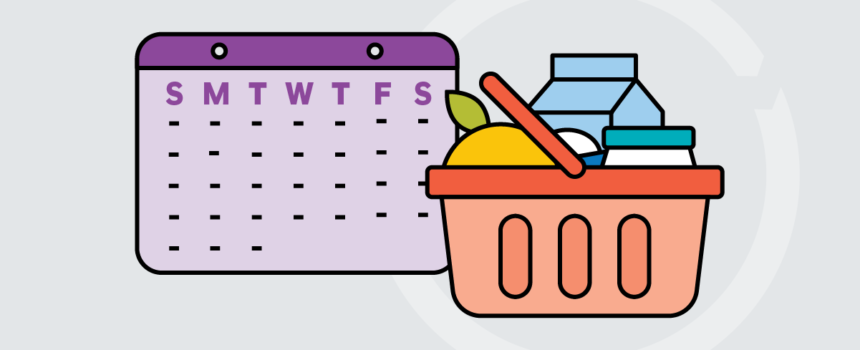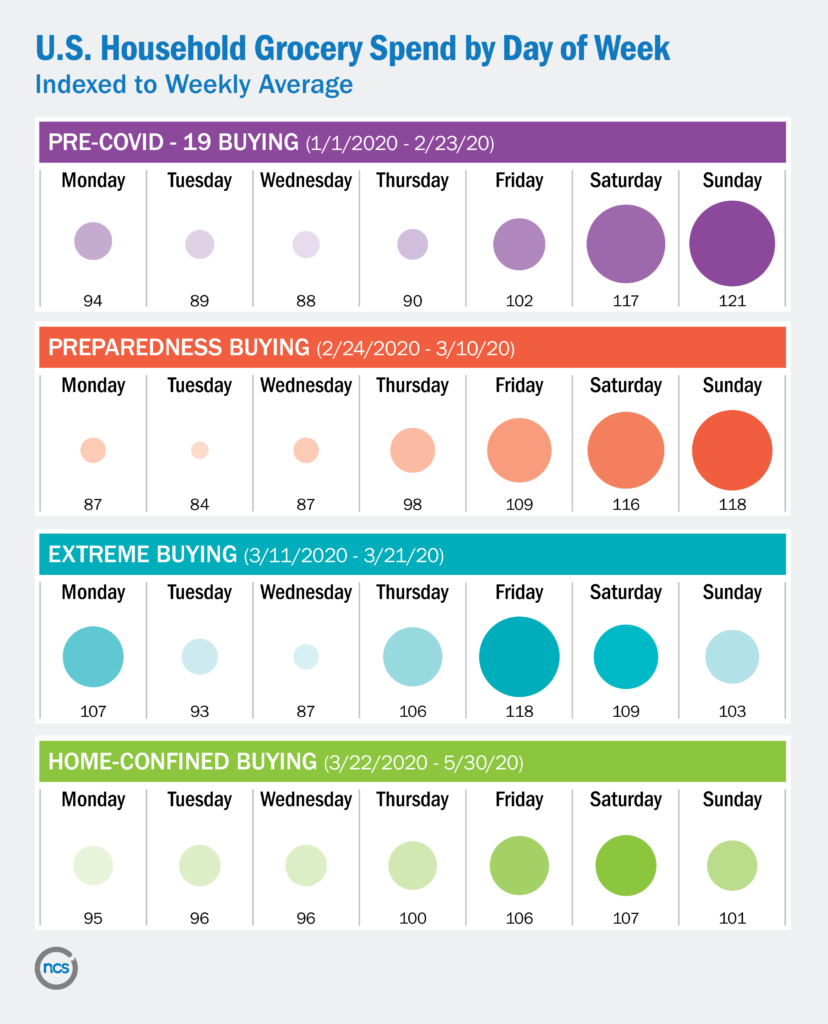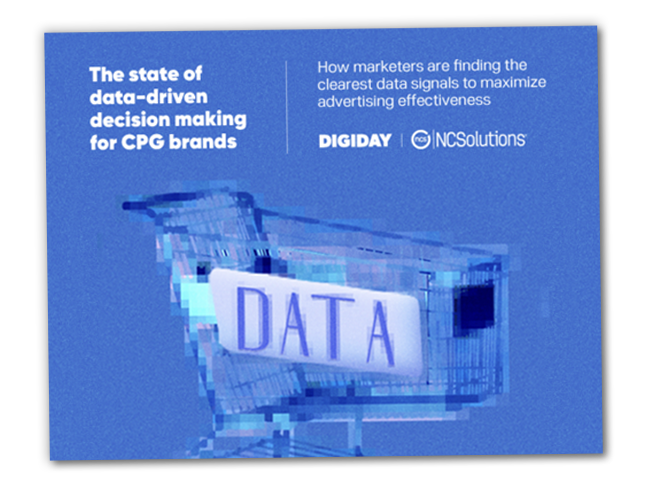Menu

By Steve Tramposch, VP Client Consulting, NCSolutions
For years, Sunday has been the busiest grocery shopping day of the week: the day when Americans prepared for the week ahead, made the highest number of trips to the store and spent the most. On a typical week, Saturday was the second choice for shopping days, while Friday was the third. The other days of the week were a mixed bag, but always lower than average.
Thursday and Friday, then, was always prime time for CPG advertisers. It was an opportunity to get in front of likely shoppers right before they were expected to make a purchase, especially consumers nearing the end of their purchase cycle.
Enter COVID-19.
Like many other aspects of American life, grocery shopping changed. More than any time in recent memory, we are dependent on CPG staples. Households are buying significantly more at the grocery store. In March, April and May of 2020, U.S. households spent significantly more on groceries respectively compared to one year prior. And not only are consumers making radically different choices about which products and brands they buy, but they’ve also altered how and when they shop — a change that goes beyond masks and social distancing. The number of weekly trips per buying household for the month of April 2020 decreased 15% from January of this year (at the same time, spending increased), as shoppers purchased more at a time to avoid being in public.
Sunday also lost its rank as the busiest grocery shopping day of the week. Instead, Saturday was the top-ranked shopping day for five of the 12 weeks since stay-at-home orders began, while Friday and Sunday each had the most spend for four of these weeks. The other four days also saw increases.
While this isn’t a major shift in behavior — consumers are still shopping more on the weekend — Friday and Saturday have entered the mix.

What does this mean for CPG advertisers?
Recency theory has proved over and over that advertising is more effective when delivered in close proximity to a purchase. In fact, recency counts for five percent of sales on average, and often much, much more. In an industry with high competition and thin margins, five percent can be a game-changer. But how does an advertiser plan for recency when shoppers are buying more every day of the week? Does it still make sense to plan for weekend buying?
With more reasons than ever for consumers to switch brands and try new categories — new shopping channels, occasional out-of-stocks, lifestyle disruption — it’s vital for brands to continuously be in-market with messaging to their buyer base and likely triers. The loyalty bag has been shaken, and there’s still a lot of room for long-lasting changes to purchase behavior.
There’s no blanket answer for the best day(s) to advertise right now, but it could be the right time for brands to re-evaluate how consumers are buying their products and adjust their schedules accordingly.
Are more dog food brand X buyers shopping on Saturday than they were before? If the answer is yes, some changes might be warranted. Are loyal shoppers still purchasing more ice cream on Sunday but new triers grabbing your brand on Friday? If the answer is yes, some changes might be warranted. In this time of changing habits, successful brands will be the ones that know their buyers and interact with them in a personalized way.
We will continue to track spend by day of week and will provide updates if the trends shift again. In the meantime, get in touch to better understand how your brand is being purchased in the store and to quantify the impact of your advertising.
Subscribe for Updates
GET INSIDE THE MINDS OF CPG BRAND MARKETERS
Learn about their data-fueled strategies
SNAG YOUR COPY OF THE REPORT TODAY
WONDERING HOW CONSUMERS RESPOND TO INFLUENCER MARKETING?
See how creating content drives results
DOWNLOAD YOUR COPY NOW
WANT TO KNOW MORE ABOUT HEALTH AND ECO-MINDED SHOPPERS?
Get CPG insights to engage your buyers
ACCESS THE E-BOOK TODAY


.png)
.png)

